Suffragettes: Women's fight to vote explained in powerful pictures
- Published
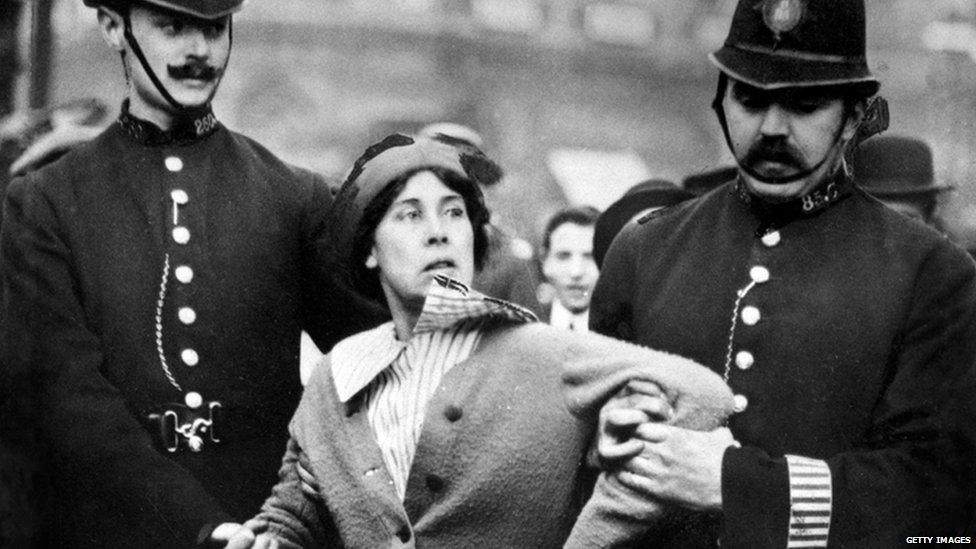
One hundred years ago women in Britain were second-class citizens.
Rape in marriage wasn't a crime. Women couldn't sit on a jury, graduate from Oxford or Cambridge and they most definitely could not vote.
The suffragettes were women who campaigned for the right to vote through controversial and sometimes violent protests.
A Daily Mail journalist first used the term to mock members of the Women's Social and Political Union (WSPU).
Emmeline Pankhurst was the leader of the WSPU, a group set up in 1903 to fight for votes.
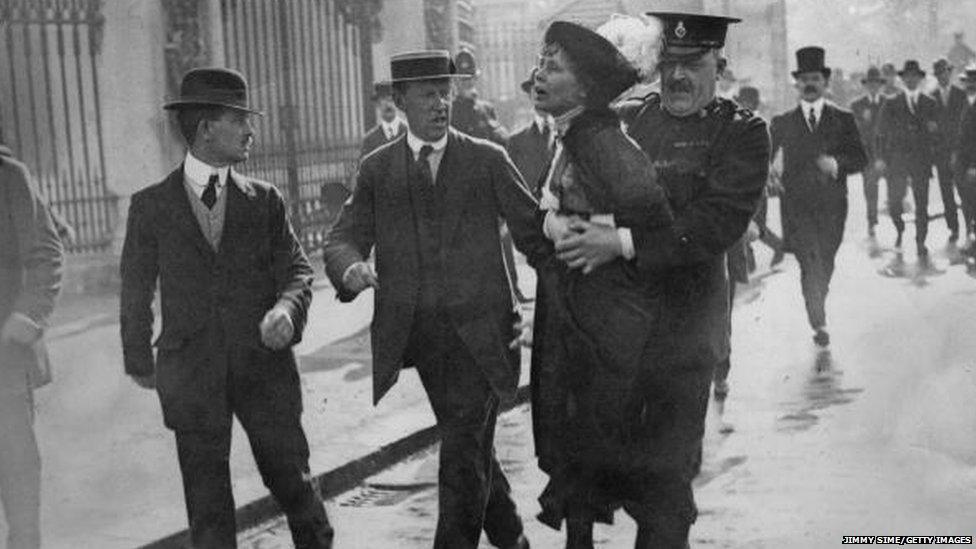
Emmeline Pankhurst being arrested outside Buckingham Palace
"Suffrage" means the right to vote and "universal suffrage" was the campaign to give everyone equal power at the ballot box.
The WSPU reclaimed their new name and decided to see it as empowering.
Why did anyone think women shouldn't vote?
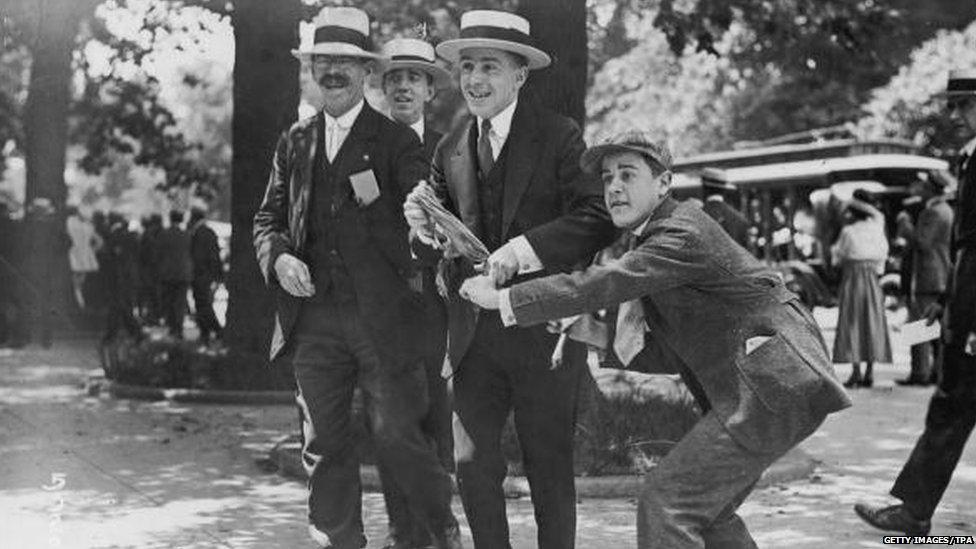
Members of the anti-suffragette movement ripping up a suffragette banner
Both men and women were among those who opposed giving women the vote.
They said women didn't fight for their country like men did.
And women didn't need it or even want it, they said.
They argued history showed men were able to pass laws on behalf of women quite well enough.
Women could influence the law already through talking to their husbands, they said. Others argued that giving women the vote would destroy chivalry.
Fight or write?
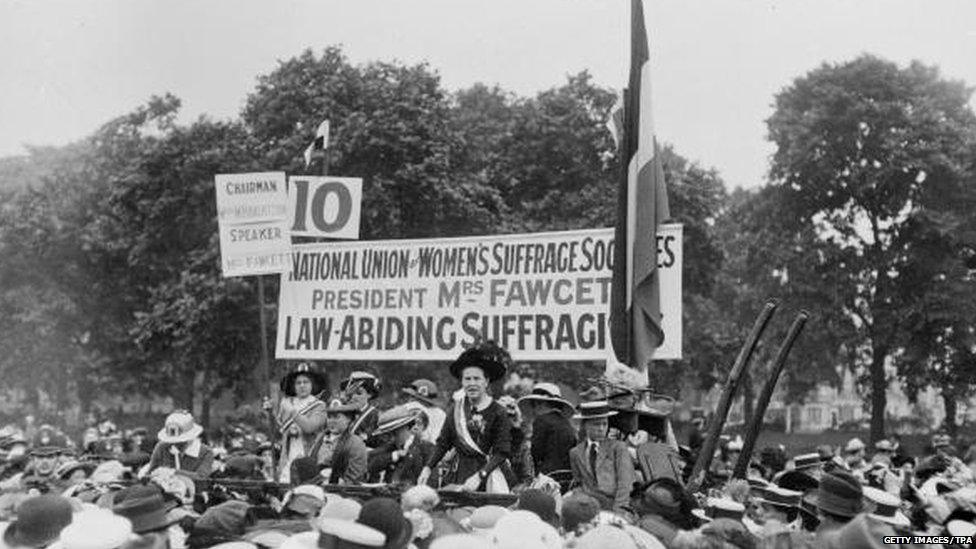
Note the "law-abiding". This is Dame Millicent Fawcett, president of the National Union of Women's Suffrage Societies
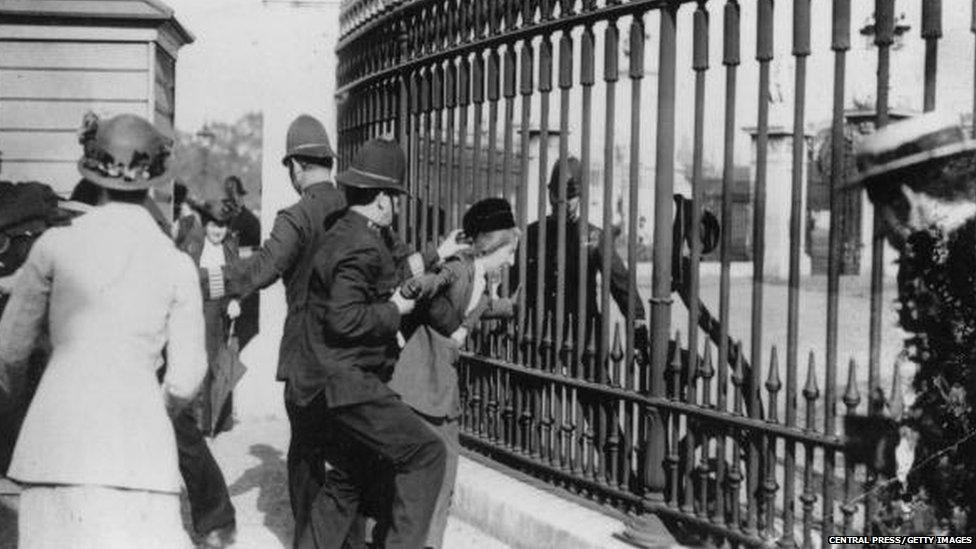
Suffragettes were much more aggressive in their tactics
The suffragettes or members of the WSPU were different from other campaigning groups.
These other groups were known as the suffragists, and believed in using more peaceful methods of trying to get the vote, like writing to politicians.
Suffragettes thought this was not enough.
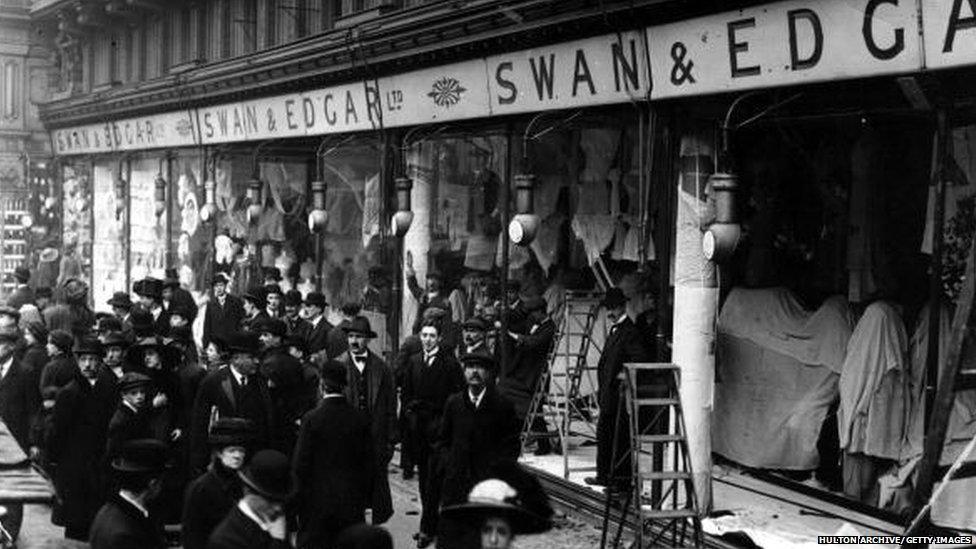
This is the result of a suffragette window-smashing spree outside Swan and Edgars department store in the West End of London
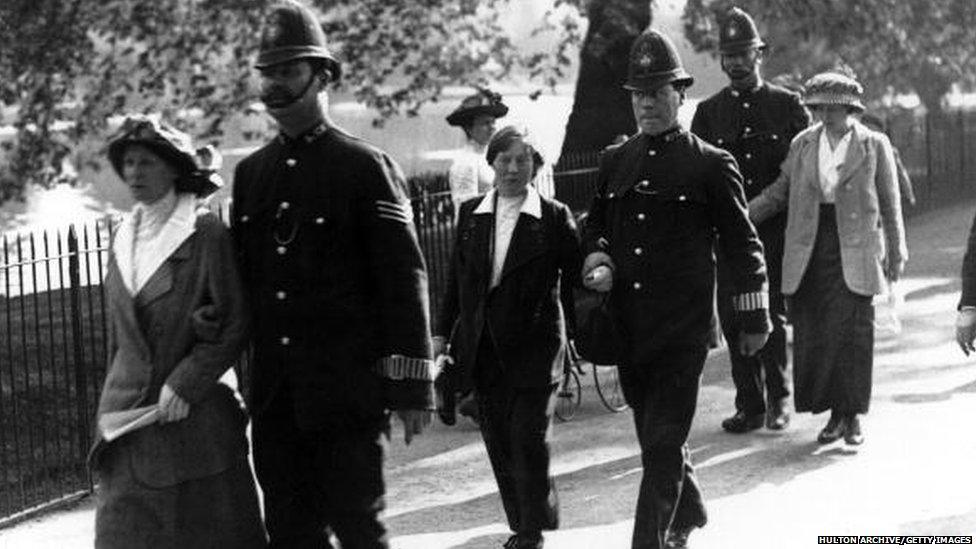
Arrested protesters are led away by the police, after the suffragette attack on Buckingham Palace
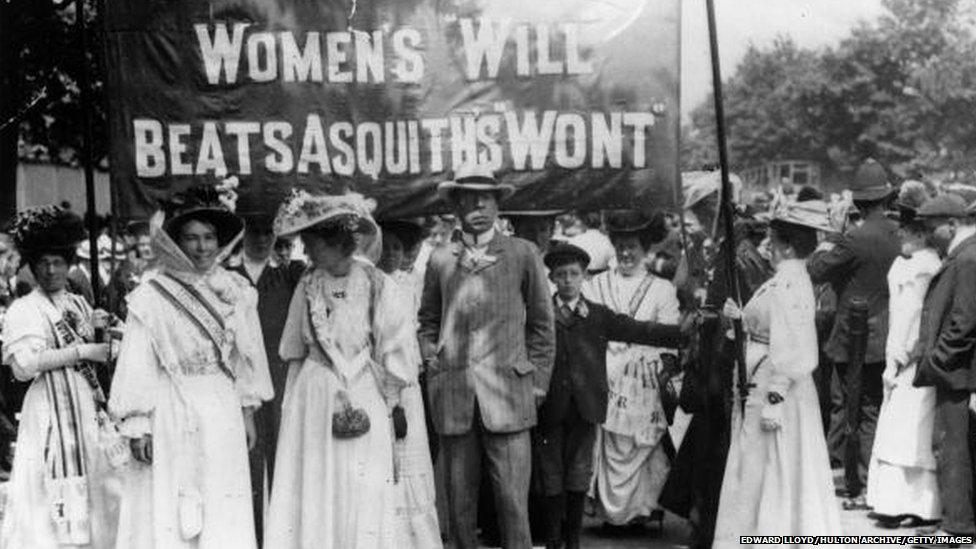
Initially it looked like the prime minister at the time, Herbert Asquith, was going to introduce the vote for women. He didn't because it was too controversial and he wanted to be re-elected
Bombs and martial arts
They set fire to buildings, smashed windows, chained themselves to railings and even detonated bombs.
Many of the women learned martial arts, specifically Jiu Jitsu, so that they could fight back against police.
One of the things they are most famous for is getting put in prison and going on hunger strike.
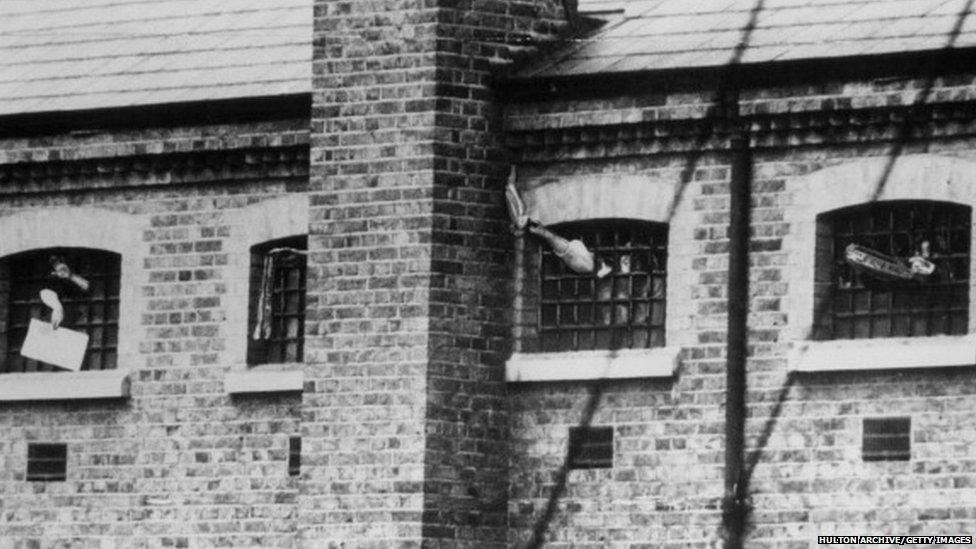
Imprisoned suffragettes waving through the barred windows of Holloway Prison, London
The women were then brutally force-fed by guards with rubber tubes.
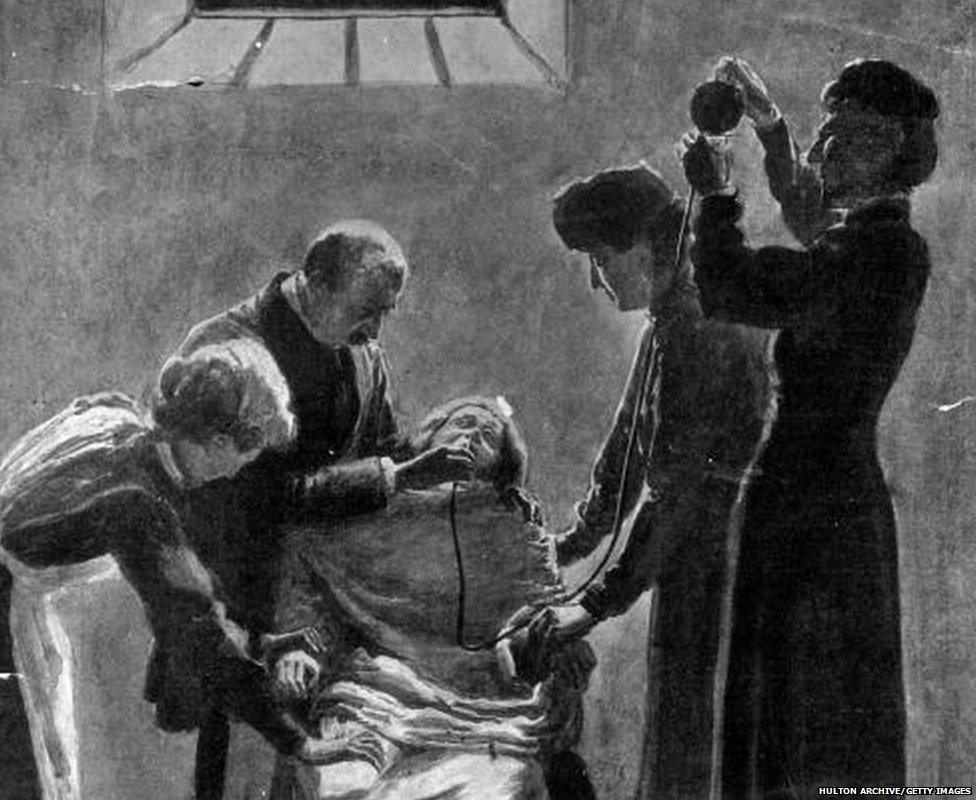
This caused outrage so the government passed a law that became known as the cat and mouse act, where those on hunger strike would be released until they were well enough again and then were imprisoned again.
Death
In 1913 the suffragette movement had its first martyr, a woman who died for the cause at Epsom racecourse in Surrey.
This was Emily Davison, who died as she tried to stop King George V's horse to raise awareness of her cause.
However, some think she didn't mean to kill herself.
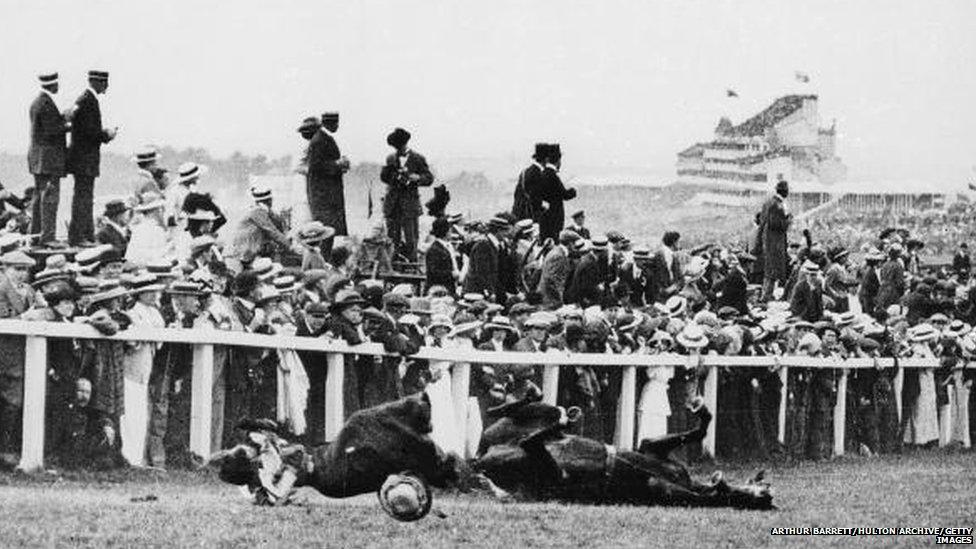
Emily Davison was fatally injured as she tries to stop the king's horse Amner on Derby Day, 1913
War
Suddenly in 1914 there was a bigger battle to fight. Britain was at war with Germany.
The suffragettes stopped a lot of their violent activities, instead helping out in roles that were traditionally given to men. These men were now fighting on the front line.
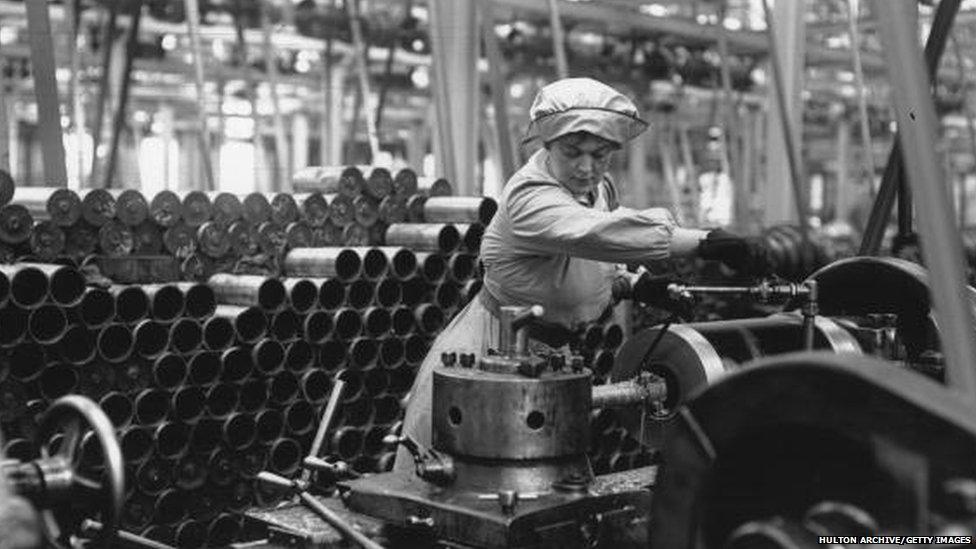
A small victory

An enfranchised woman votes for the first time in the United Kingdom
In 1918, the Representation of the People Act was finally passed meaning some women over the age of 30 could vote.
If you were a property owner or graduate, that gave you the right to vote, as well as if you were married to a property owner.
More than eight million women in the UK were given the vote.
But women would not get the same voting rights as men until 1928.
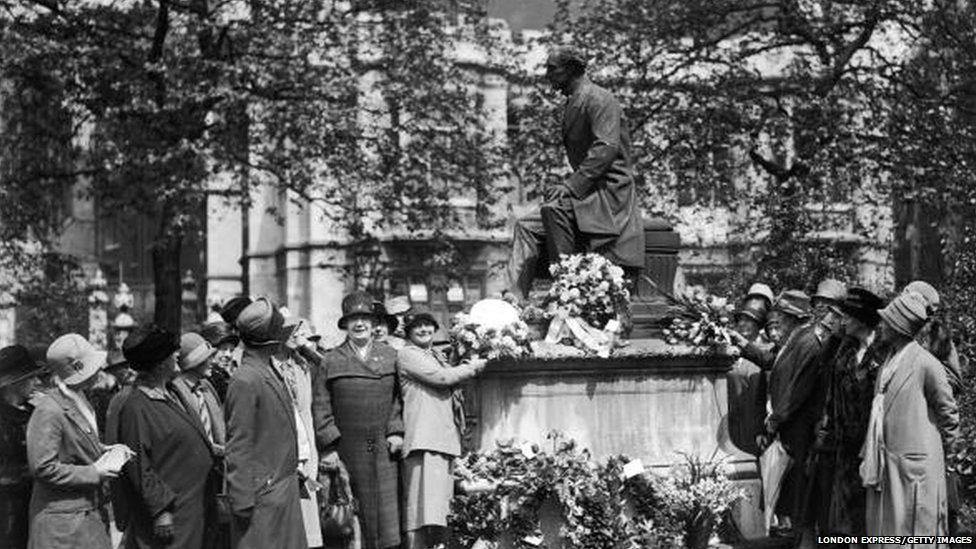
Women paying tribute to John Stuart Mill in 1928, when women were given the vote. The politician and philosopher supported votes for women around 1860, but was defeated in parliament
Britain wasn't the first country to give the vote to women (that was New Zealand in 1863), but it certainly wasn't the last.
Women in Switzerland didn't get the vote until 1971.
In South Africa it wsn't until 1994 that all women could vote.
Saudi Arabian women became eligible to vote in August of this year.
Follow @BBCNewsbeat, external on Twitter, BBCNewsbeat, external on Instagram, Radio1Newsbeat, external on YouTube and you can now follow BBC_Newsbeat on Snapchat